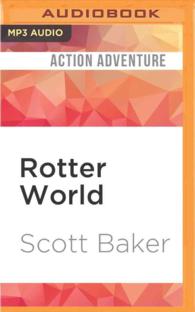Full Description
This book is derived from selected papers from the Fourteenth International Congress on Mathematical Education Topic Study Group 12, Teaching and Learning Statistics. It describes recent research on curriculum, pedagogy and outreach initiatives from countries as diverse as Brazil, Chile, Columbia, Denmark, Germany, the Netherlands, Spain, Sweden, Thailand, Turkey, the United Kingdom, and the United States. The book has a focus on the use of data in the teaching and learning of statistics across grade levels and begins with an overview of the status of statistics education and the use of data from seven different countries across the continents and the link between research and practice in those countries. Because it contains specific examples of the research, for example, on the ways children learn, the choice and implementation of tasks, or the role of informal inference, the book will be a great resource to those interested and involved in the teaching of statistics, curriculum developers, and statistics education researchers.
Contents
Chapter 1. Introduction.- Part I. Statistics Education Across the World.- Chapter 2. An International Look at the Status of Statistics Education.- Chapter 3. Perspectives on Statistics Education in Seven Countries.- Chapter 4. The Brazilian National Curricular Guidance and Statistics Education.- Chapter 5. Statistics and Probability Education in Germany.- Chapter 6. New Zealand Statistics Curriculum.- Chapter 7. Statistics Education in the Philippines: Curricular Context and Challenges of Implementation.- Chapter 8. Statistics and Probability in the Curriculum in South Africa.- Chapter 9. Statistics in the School Level in Turkey.- Chapter 10. United States Statistics Curriculum.-Part II. Data and Young Learners.- Chapter 11.- Elementary Students' Responses to Quantitative Data.- Chapter 12. Reading and Interpreting Distributions of Numerical Data in Primary School.- Chapter 13.Young Learners Experiencing the World through Data Modeling.- Part III. Data and Simulation to Support Understanding.- Chapter 14. Investigating Mathematics Teacher Educators' Conceptions and Criteria for an Informal Line of Best Fit.- Chapter 15. Introducing Density Histograms to Grades 10 and 12 Students: Design and Try Out of an Intervention Inspired by Embodied Instrumentation.- Chapter 16. Margin of Error: Connecting Chance to Plausible.- Chapter 17. The Mystery of the Black Box: An Experience of Informal Inferential Reasoning.- Part IV. Data and Society.- Chapter 18. Critical Citizenship in Statistics Teacher Education.- Chapter 19. Toward Statistical Literacy to Critically Approach Big Data in Mathematics Education.- Chapter 20. Interdisciplinary Data Workshops: Combining Statistical Consultancy Training with Practitioner Data Literacy.- Part V. Statistical Learning, Reasoning and Attitudes.- Chapter 21. Distinctive Aspects of Reasoning in Statistics and Mathematics: Implications for Classroom Arguments.- Chapter 22. Teaching Statistics and Sustainable Learning.- Chapter23. How Students' Statistics Beliefs Influence their Attitudes.- Chapter 24. Algebraization Levels of Statistical Tables in Secondary Textbooks.








